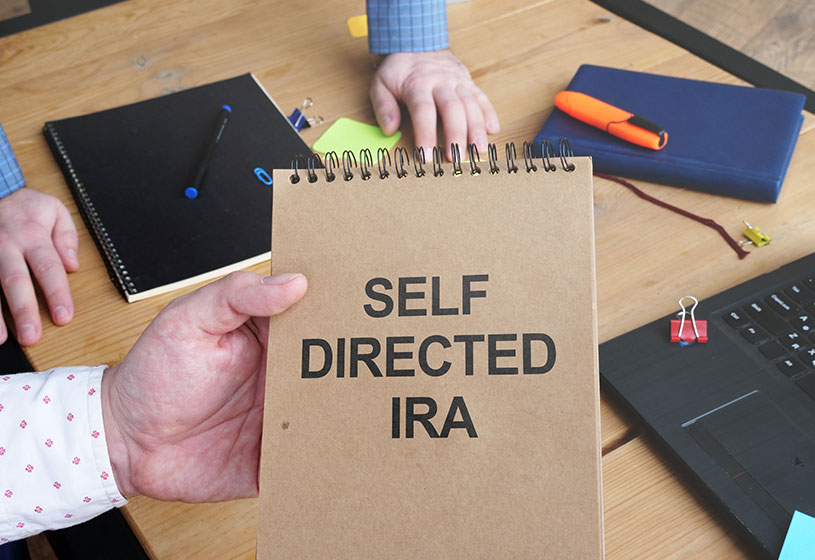When you think about saving for retirement, a self-directed IRA might be a powerful tool to consider. Unlike other retirement accounts, a self-directed IRA allows you to choose from investments like real estate or precious metals. IRA puts you in the driver’s seat, allowing you to steer your retirement savings plan in the direction you think is best. Setting up a self-directed IRA is simple if you know the steps.
What Is a Self-directed IRA?
A self-directed IRA is a type of retirement account that lets you invest in things you might not be able to with a regular IRA. You see, most retirement accounts at banks or investment companies limit you to investing in stocks, bonds, or mutual funds. But with a self-directed IRA, you can invest in all sorts of things, like buying a piece of land, investing in a small business, or even precious coins.
The “self-directed” part means you’re choosing where your money goes. It’s like having a box where you can put almost any kind of investment inside, as long as you follow some important rules set by the IRS, which is the tax office. You can’t use the IRA for your benefit right now, like living in a house you bought with it, and you can’t buy things from or sell things to certain people close to you, like your family.
Choosing the Right Custodian
The first step in setting up a self-directed IRA is to find a custodian. A custodian is a bank or other financial company looking after your IRA. They’re like the guardian of your retirement treasure chest. But not all custodians are the same. Some might only let you invest in certain things, while others offer a full range of options.
You’ll want to choose a custodian who knows a lot about the different investments you’re interested in. It’s important to ask them about their fees because you don’t want too much of your money going to them instead of growing for your retirement.
Once you find a trusted custodian, you’ll open your IRA account with them. They’ll have some paperwork for you to fill out. This is where you’ll agree to their rules, and they’ll agree to take care of your account. After that, you can start putting money into your IRA and choosing your investments. It’s a big responsibility, but it can be really rewarding to see your retirement savings grow in your chosen ways.
Funding Your Self-directed IRA
After you’ve set up your self-directed IRA with a trusted custodian, it’s time to put money into it. This is called funding your IRA. You can fund your IRA by moving money from a different retirement account into your new one. This is often called a rollover. You can also just put money in from your savings, but there are limits to how much you can put in each year. These limits can change, so it’s good to ask your custodian or look up the rules to see how much you’re allowed.
When you add money to your self-directed IRA, it’s like planting seeds in a garden. The money is the seed, and the investments you choose are the soil. With the right care and choices, your money can grow over time, just like a garden grows from plant seeds.
Making Investments Within the IRA
Now that you have your self-directed IRA, you can start investing it. But remember, investing with a self-directed IRA differs from buying stocks. You can choose from many things but must ensure you’re doing it right.
Before you invest, do lots of research or talk to experts. You want to know as much as you can about what you’re putting your IRA money into. Once you’re ready to invest, tell your custodian what you want to do, and they’ll help you. It’s important to keep track of what your IRA owns, just like you’d keep track of what’s in your garden.
Tax Considerations and Rules to Follow
One of the big reasons people use self-directed IRAs is because of the tax benefits. The money you earn from your investments in a self-directed IRA gets taxed later. Instead, you pay taxes later, usually when you take the money out after you retire. This can help your retirement savings grow bigger over time.
But there are strict rules you need to follow to get these tax benefits. You can’t use the IRA for your own needs right now. You also can’t buy things for the IRA from yourself or certain people close to you, like family members. And you have to take out a certain amount of money when you reach a certain age, which is called taking distributions.
Unlock the Power of Self-directed IRAs with Nevada Trust Company®
Ready to take control of your retirement investments? Nevada Trust Company® is your trusted partner in establishing and managing self-directed IRAs. Discover the freedom to diversify your portfolio beyond traditional assets. Let us guide you on the path to financial empowerment and flexibility.





